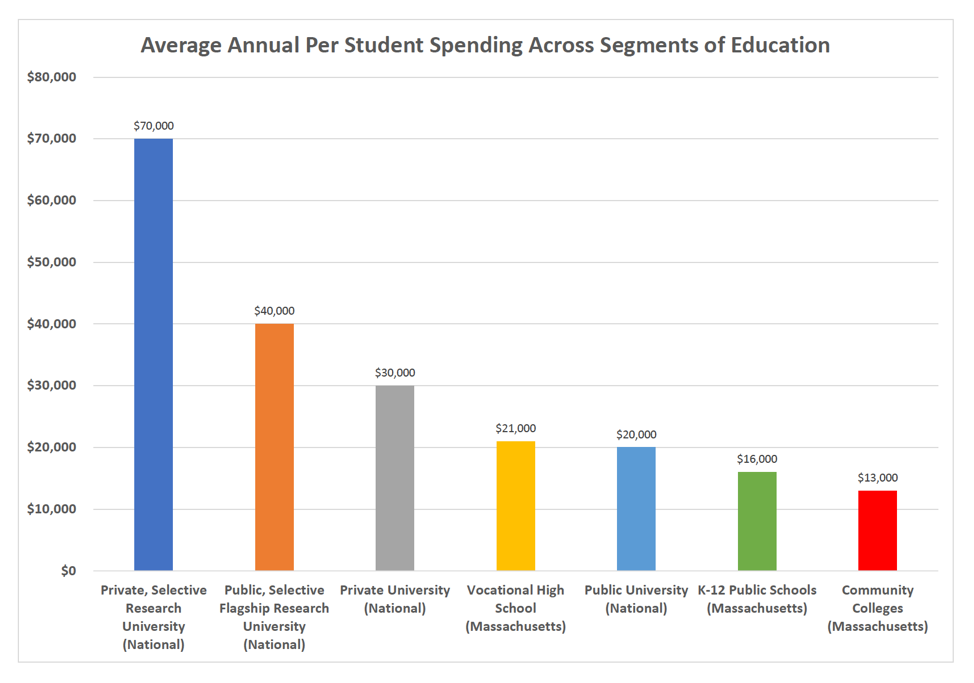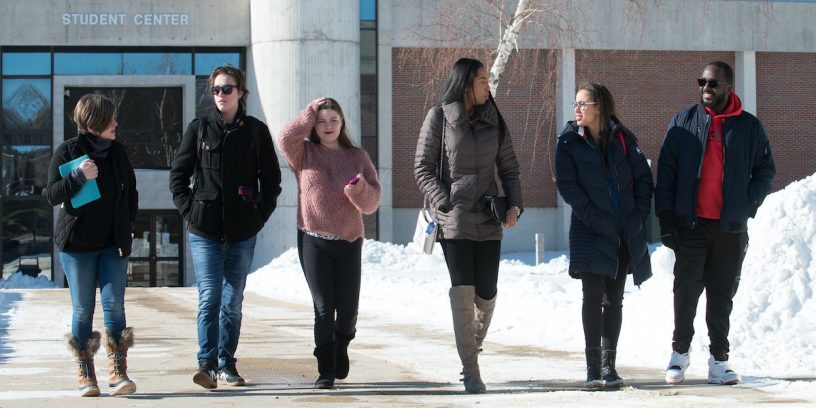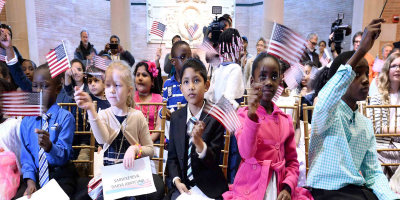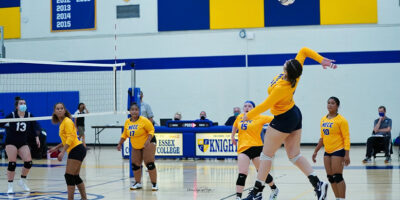NOTE: This article appeared in the April 21, 2020 editions of Community College Daily and Merrimack Valley Magazine.
An open letter to the President of the United States, members of Congress, the U.S. Secretary of Education, all fifty state governors, state legislators, state education secretaries and commissioners, et. al.
Dear Elected Officials and Policymakers:
Thank you for your public service. The work you do is both important and complicated. I recognize that the vast majority of you want to do what’s right for the greatest number of people, but “what’s right” isn’t always clear, and there are a lot of demands on your time and attention.
So, I have only one straightforward request: The next time you have to make a decision—any decision—about “higher education,” please stop for just a moment and ask yourself this question: “How are community college students different?”
If you do, you will make better decisions, benefit more lives, make better use of resources, and improve your state or our nation’s economy more than you may have ever thought possible.
You’ll also go a long way toward creating a more fair and equitable America while you’re at it.
Decisions about higher education funding and public policies are being made all the time, and they are always important; but the COVID-19 Pandemic has created a new sense of urgency around better understanding the differences among colleges and their students before some critical decisions that are about to be made in the weeks and months ahead.
Please know that all “higher education” is not the same.
There are enormous differences between highly selective, very expensive, private universities (for example, MIT, Stanford, or Yale); pretty selective and expensive, public “flagship” universities (like UMass, UCLA, or the University of Michigan); somewhat selective and more affordable public state colleges and universities (Massachusetts College of Liberal Arts or Fitchburg State University); and “open door”, inexpensive community colleges—like Northern Essex Community College up here in northeast Massachusetts, or any of the more than 1,100 community colleges across America.
Still, when most people think about traditional “college students” they tend to picture someone who just graduated from high school, maybe 18-19 years old, financially dependent on their parents, living in a dormitory, taking classes full-time, and enjoying campus athletics, clubs, and social life.
Those students still exist, but they’re less than 30% of America’s undergraduates. They are also largely concentrated on the country’s selective, expensive private college and public university flagship campuses, which have daunting application processes, low acceptance rates, and admit only students near the top of their class (which usually means students who come from wealthier families with college-going experience).
Most of today’s “traditional” college students—especially at community colleges—are “non-traditional.” They are older, poorer, represent much greater diversity, and are likelier to be raising families themselves.
 A group of NECC students (and one very young future freshman) study outside the David Hartleb Technology Center on the Haverhill campus.
A group of NECC students (and one very young future freshman) study outside the David Hartleb Technology Center on the Haverhill campus.
Out of all those different sectors of higher education, community colleges serve larger proportions of:
- First generation students
- Low income students
- Minority students
- English language learners
- Students with learning disabilities
- And many other “at-risk” students
They are also the lynchpin for the nation’s local economies. After graduation, 85% of community college degree earners stay close to their alma maters, contributing to the workforce, buying homes, raising families, and becoming the next generation of community leaders.
But for all the value community colleges and their students provide, all too often they are overlooked or, even worse, disadvantaged by decisions about funding or public policy.
For example:
- Even though community colleges educate nearly half of the undergraduates in America each year, they typically receive 25% or less of a state’s higher education funding, and have the fewest resources to spend on their students of any level of education in America, as this table illustrates:

- According to the most recent Council for Advancement and Support of Education (CASE) Voluntary Support of Education report, charitable donations to colleges and universities in America rose last year by over 7% to nearly $47 billion. But almost 70% of those contributions went to already wealthy research universities, while community colleges collected less than one-half of one percent (.004).
- Critical federal educational policies routinely ignore community college students. The U.S. Department of Education’s approach to Pell grants for low income students, data gathering for institutional accountability, student loan regulations, Title IX enforcement about athletics and sexual assault, and many other important policies are usually aimed at those young, “traditional” four-year, residential college students, who are less than a third of U.S. undergraduates today. The needs of the nearly six million community college students, who tend to be a little older, live off campus, take classes part-time, and work thirty or more hours a week to pay for their own education and often to support families of their own, are overlooked.
Even when state and federal policy makers try to help higher education, they often end up widening the gap between the haves and the have-nots.
Here are two recent examples:
In Massachusetts, the state legislature created the “Endowment Match Incentive Program” back in 1997. The program provides $1 in matching state funds for every $2 raised through private fundraising, up to whatever amount is available in a given year.
For more than a decade, no matching funds were available. But the past couple of years (until the COVID-19 Pandemic struck) have been very good ones for the state budget, so the legislature agreed to put $10 million into the program this year—a wonderful opportunity for the foundations and fundraisers at the Commonwealth’s public colleges and universities to go to work with donors eager to make their contributions go even farther.
One catch: The Endowment Match Incentive Program funding follows the same formula as the state’s overall approach to funding higher education: 50% goes to the flagship University of Massachusetts, 25% goes to the state universities, and 25% goes to the community colleges.
That $5 million for the University of Massachusetts means:
- $1.25M for each of four undergraduate campuses
- $68 per student (for 74,000 students)
The $2.5 million for the state universities means:
- $278K for each of nine campuses
- $37 per student (for 67,000 students)
And the $2.5 million for the community colleges means:
- $167K for each of fifteen campuses
- $23 per student for (111,000 students)
My campus and students can certainly use $167K for scholarships and assistance, and we’re grateful for it. But the end result from a public policy perspective is that universities with much larger endowments, already generous donors, and students who are, on average, better off financially get more.
Meanwhile, community colleges have to work harder to raise less money to earn a smaller match that has to get spread across a lot more students who have fewer resources themselves in the first place.
Somewhere along the way, it would have been tremendously helpful to ask that question: “How are community college students different?”
Similarly, community college students really found themselves at the short end of the stick for this week’s distribution of the federal CARES (Coronavirus Aid, Relief, and Economic Security) Act funding.
The CARES Act is expected to provide nearly $14 billion in emergency aid to higher education students and institutions, based on a formula that considers the full-time equivalent enrollment of students, as well as their eligibility for Pell grants.
Sounds reasonable, but when you ask, “How are community college students different?” here is what you discover:
Because they tend to be poorer, raising families, and working more hours while in school, most community college students attend part-time.
At Northern Essex Community College, 5,233 students enrolled last Fall, but only 32% were full-time, so our “full-time equivalent” enrollment was actually 3,080. The median family income for our students is $52,900. Most come from the lowest family income rungs on the economic ladder, and over half are eligible for Pell grants.
The NECC Foundation has an endowment fund worth just over $4 million.
We are expecting to receive just under $3.3 million in CARES Act emergency aid (which will help, but will not come close to covering the expenses and losses we and our students are experiencing right now).
Meanwhile, 115 miles away in Hanover, New Hampshire, 4,418 undergraduates are enrolled at Dartmouth College, one of the eight prestigious “Ivy League” schools. Not surprisingly, 99% of Dartmouth’s students are full-time, so their “full-time equivalent” is the same as their headcount enrollment. The median family income for students at Dartmouth is $200,400 and 70% come from the top 20% of income earners in America. Only 14% of Dartmouth’s students are eligible for Pell grants.
Dartmouth has an endowment fund worth nearly $6 billion (yes, that’s “billion” with “B”).
Dartmouth is receiving just over $3.4 million in CARES Act emergency aid.
Two colleges, not far apart, but incredibly far apart.
When it comes to the CARES Act, helpful though the additional funding will be, here at NECC, like at community colleges across the nation, we will have fewer dollars to spread across more students who need much greater assistance.
If you’ve read this far, dear elected officials and policymakers, please accept my sincere gratitude again for your public service, and for hearing this plea; and in the weeks and months ahead, as some critical decisions about higher education are made, please, please pause for just a moment before each one, and ask yourself that important question: “How are community college students different?”
Thank you.






